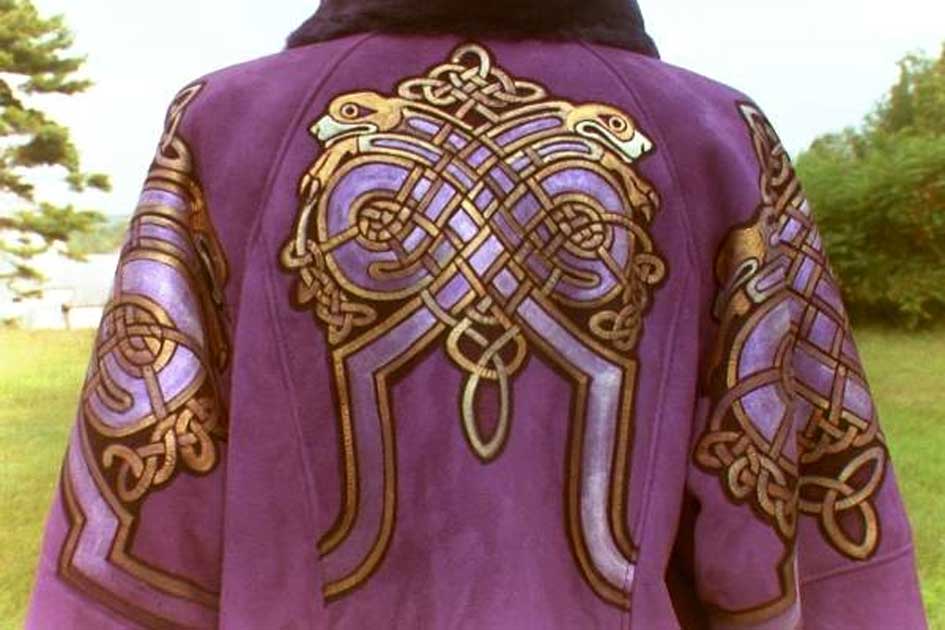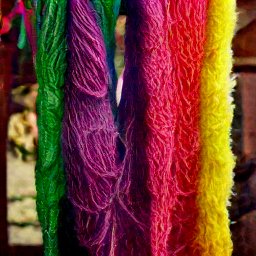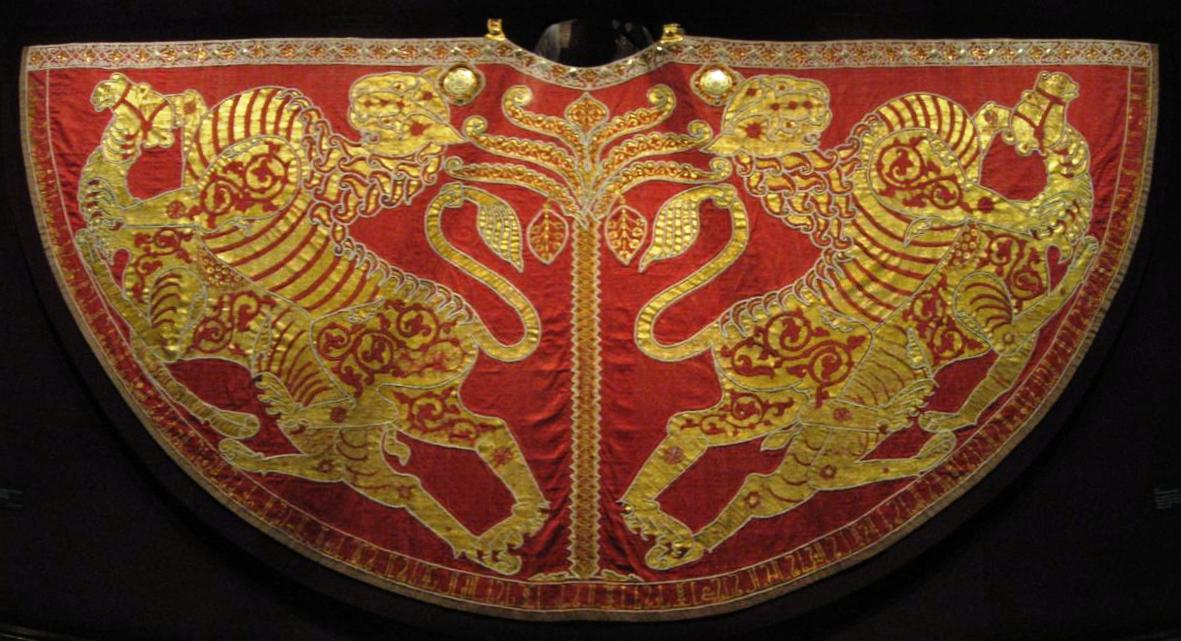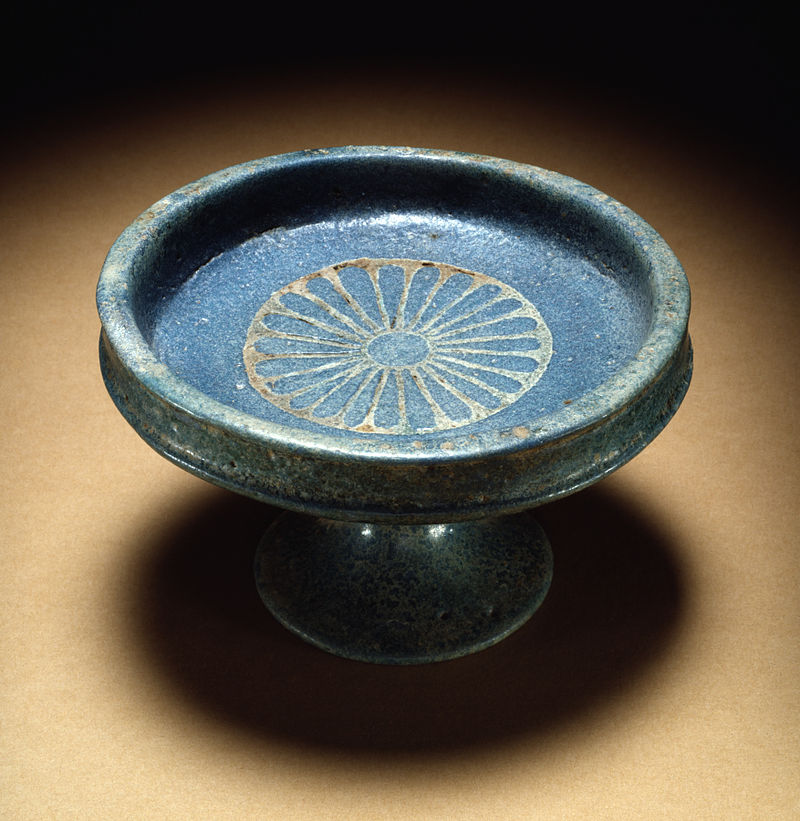The Lost art of ancient colors
In these current times, with trade across all of Libynos, there are varying shades of fabric colors. from the reds, browns, and yellows of the common people to the purples, blues, and greens of the wealthier. While they don't appear out of the ordinary among themselves, there is a difference when they are compared to any Late kingdom fabrics. The Late Khemitian ones are still bright or brighter than their modern counterparts. It's more prevalent in the reds, purples, and blues.
Scholars can trace atleast some of the lost knowledge back to the Plague of Madness of 1655. many villages and towns were wiped out, including Wati as the plague followed the path of the Stygian River. Wati was known for its beautiful textiles, but after the plague of madness it was walled in as a necropolis to stop the plague's progress. survivors have moved to the nearby town to make linen, but now just for futural rites.
Back to the old khemetian period, while much of the vegetable and clay reds were used for ceremonies and celebrations, there was another red dye, Desher, a blood red that barely fades in the sun and once used in frescos in the tombs of kings. Desher is also where the Deshret name came from and possibly where the dye originated. This dye faded in use after the trade routes were disrupted by the various wars, and never recovered.
 Current purple is a mixture of hex iron and vermillion and can be very toxic. Many attempts at mass production of this royal color, often ends in a crippling madness. A more affordable purple for the lower aristocrats is of imported dragon fruit. Dragon purple is a cheerier purple, but since it's a vegetable-based dye, it will fade over time.
Current purple is a mixture of hex iron and vermillion and can be very toxic. Many attempts at mass production of this royal color, often ends in a crippling madness. A more affordable purple for the lower aristocrats is of imported dragon fruit. Dragon purple is a cheerier purple, but since it's a vegetable-based dye, it will fade over time.
In the early days of the Khemit Kingdom, there was another bright purple, used by all the Pharaohs called Tyrian Purple. Tyrian purple originally came from a town lost to the Great Sand Sea. The name continued for centuries afterwards till the beginning of the old kingdom, where competing dynasties fought over exclusive access to Tyrian purple and their rule over the kingdom. it was thought through all the skirmishes and assassinations, that the knowledge of Tyrian purple was lost.
Red
Red is a mostly a vegetable dye from berries or bamboo roots. easily produced, but will fades to brown over time. A more expensive imported dye from Alchemists is Vermillion, made from lead ore. It is highly toxic to manufacture, making it a dangerous material that can cause insanity or paralysis over time.Back to the old khemetian period, while much of the vegetable and clay reds were used for ceremonies and celebrations, there was another red dye, Desher, a blood red that barely fades in the sun and once used in frescos in the tombs of kings. Desher is also where the Deshret name came from and possibly where the dye originated. This dye faded in use after the trade routes were disrupted by the various wars, and never recovered.
Blue
The current blue is also created by alchemists, but from iron. Both are lacking in the kingdom of Khemit. It's a very dark blue powder called hex iron. It's time consuming to make and due to the lack of resourses in Khemit, affordable by only the aristocracy. There was a time however, that anyone could wear blue, that color was called Indiglow. There are still stories of refined indiglow cloaks that would appear like the starry night. It is in Wati, where the latest remnants of indiglow blue have been found.Purple

A robe in Tyrian Purple ( Facweb.cs) by unknown
In the early days of the Khemit Kingdom, there was another bright purple, used by all the Pharaohs called Tyrian Purple. Tyrian purple originally came from a town lost to the Great Sand Sea. The name continued for centuries afterwards till the beginning of the old kingdom, where competing dynasties fought over exclusive access to Tyrian purple and their rule over the kingdom. it was thought through all the skirmishes and assassinations, that the knowledge of Tyrian purple was lost.





It's so interesting to read about the availability of colors and pigments in different places of the world! It's neat to see how that influences local fashions and economies.
Seek a new dawn, in Malkora!
The Feral Sovereign sleeps peacefully, but will return...
It did start with a grain of reality about the lost Egyptian Blue pigment. one of the interesting things I read this year. before writing this was how the same influences impacted early comic book villains as they wore mainly greens and purples.